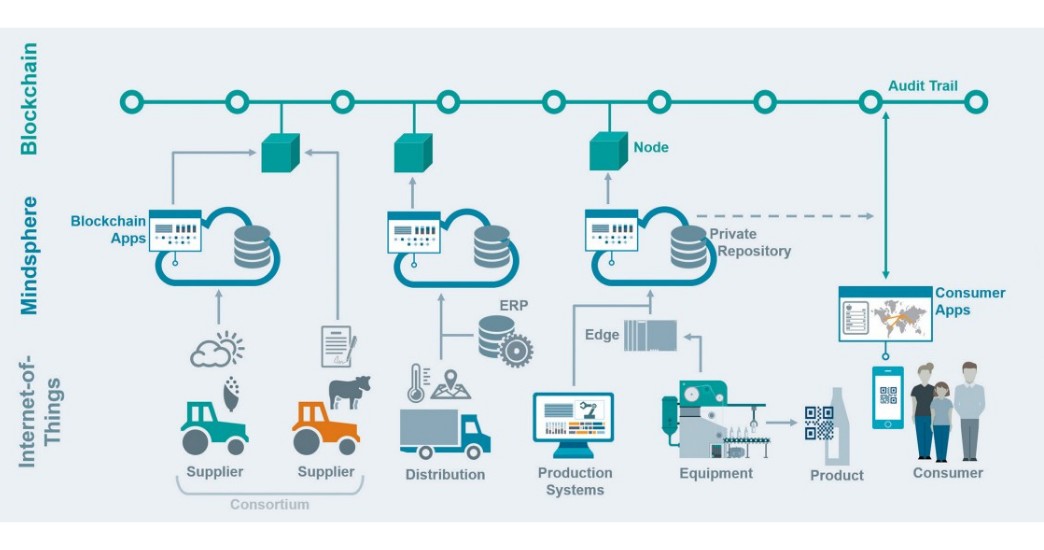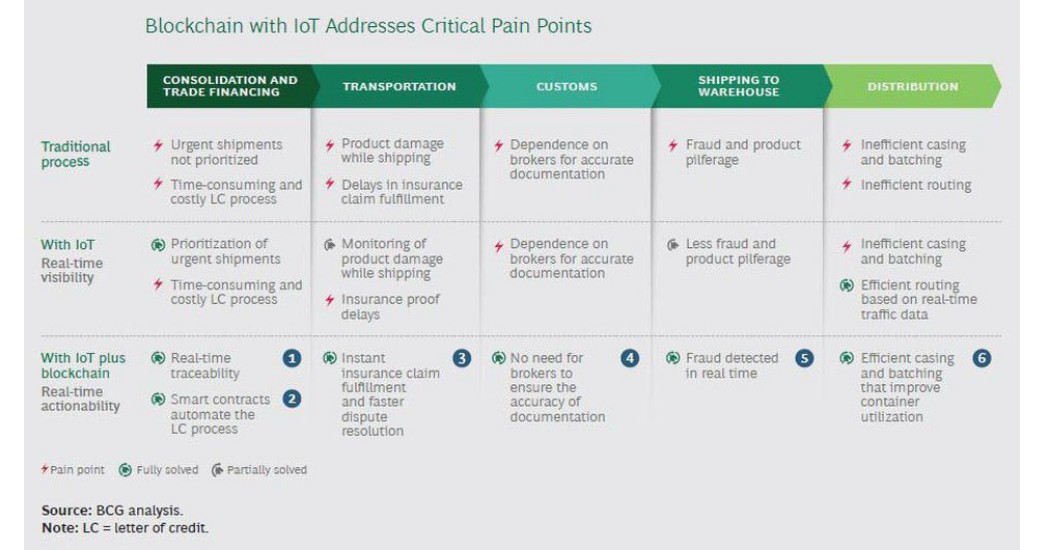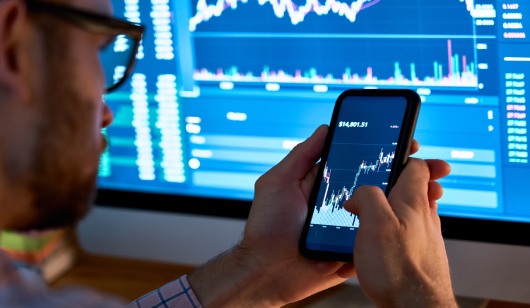In this detailed guide, discover the applications of blockchain technology in enabling supply chain network traceability and leading to its sustainable development.
The use of blockchain technology has extended beyond its usage as powering cryptocurrencies to advancing supply chains.
The encrypted, immutable nature of the record-keeping blockchain technology behind Bitcoin and other cryptocurrencies is emerging as a game-changer in supply chain management now.
Enabling real-time traceability of supply chain activities, including goods distribution, administrative processes, and financial transactions are a few of the advantages that blockchain supply chain development can provide to stakeholders.
Additionally, it improves supply chain interoperability with secure collaboration and communication, revamps complex operations, creates new business opportunities, and facilitates means to unlock efficiency.
Blockchain Technology
Blockchain is a distributed ledger that provides traceability, verifiability, and immutability of transactions.
Further, with smart contract solutions, a blockchain network itself can trigger transactions automatically. It helps recognized parties in the supply chain to create efficiency with security across processes.
Developing a traceable supply chain blockchain will include a permissioned blockchain network implementation with new specifications for representing block transfers and new regulations regulating the system.
Also, Read Transform your Business with Blockchain-Based Traceability
Why Supply chain Traceability is Essential and Blockchain Helps
Right through the value chain, stakeholders demand traceability and sustainability.
For the development of circular supply chains, companies must invest in digital traceability tools. For making the ‘digital thread’ of traceability a common practice, cross-sector cooperation is also necessary.
The loyalty of consumers always relies on supply chain efficacy. Thus, companies must do more than only offer the product that consumers want.
Today’s supply chains still have to deliver on a brand promise: sustainability.
Customers, staff, and regulators expect more competitive development in the business-to-business and business-to-consumer sectors.
A study reveals that firms effectively matching the sustainability requirements get faster sales growth and consumer satisfaction.
Ilham Kadri, CEO of Solvay’s chemical supplier, puts it this way, “profitability is sustainability.
Track Every Activity
Then, the operational consequence is that enterprises with their supply chains need to trace everything. They need to track where it came from and where it went, from its smallest raw material inputs to finished goods.
True sustainability also suggests that enterprises have to consider what happens to their products after a purchase. For several executives leading supply chain design and operations, it redefines the existing mission.
Or, at least, expands it. Also, it illustrates that seeing the system from a consumer perspective can be an invaluable guide for a sustainable supply chain.
One example is the car industry. The growth in the selling of electric vehicles and the sharing of cars is increasing.
It reveals a growing interest in sustainable mobility solutions by customers. However, it also raises a question about sustainable battery manufacturing and storage systems.
Industry players in the design, manufacturing, and delivery of batteries are working with policymakers to build traceable supply chains with blockchain.
They are developing supply chain solutions that enable responsible sourcing, recycling, remanufacturing, and reusability of electric vehicle batteries and their raw material components.

Source: Siemens
Stakeholders in all supply chains must now step up the use of digital traceability technologies to scale it up. It would provide companies with the many useful skills needed to deliver competitive goods and services.
Also, Read | Thwarting Automotive Counterfeits with Blockchain Traceability
How Blockchain Technology does that
Let us define this with a hypothetical example to highlight the shortcomings of the present ecosystem of financial-ledger entries and ERP schemes.
Also, we evaluate the possible advantages of a blockchain world with a straightforward transaction example.
An instance involves a merchant getting supplies of a commodity from a supplier and a bank that provides the working capital to complete the order.
The transaction process involves information flows, product flows, and financial flows.
Traditionally, for all three parties concerned, the fragmented flow does not efficiently contribute to financial-ledger entries. Moreover, state-of-the-art ERP programs’ manual evaluations and checks cannot consistently connect these three flows.
It makes it impossible to remove implementation mistakes, facilitate decision-making, and overcome supply chain disputes.
Also, Read | Developing a Blockchain-based Traceability System for the Food Supply Chain
Capturing a Quick Transaction on a Blockchain
The widely used financial ledgers and enterprise resource planning programs do not accurately allow all pertinent documents, inventory, and money flow visibility to the three parties involved in a supply chain transaction.
Blockchain essentially provides a single unified view of the three processes, with various other advantages.
Execution errors are often difficult to spot in real-time, such as errors in product records, missed orders, and double payments.
It is difficult and costly to find the origins or address them by tracing the sequence of events documented in available ledger entries and records.
Traceable Transaction Process
Now, let’s consider how the transaction looks. First, a manufacturer places an order and sends it to the supplier. At this point, because there were no exchanges of goods or services, there would be no entries in the financial ledger.
The merchant, though, registers the cryptographic token for the order with the blockchain. The seller then signs in the order and confirms the order to the manufacturer.
An operation gets reported on the blockchain for this.
But, it does not create an entry in a financial ledger. Next, the seller asks a bank for a working capital loan to fund the development of parts.
On a shared blockchain network, a bank verifies the order, accepts the loan, and registers the digital token of the loan. And so on.

Source: Forbes
Also, Read | Analyzing the Food Traceability System Developed by Walmart with Hyperledger Fabric
Partly since it provides a chronological string of blocks combining the three types of flows in the transaction and capturing information that is not documented in a financial-ledger scheme, a blockchain is useful.
Also, each block is encrypted and distributed to all members who manage the copies of data.
Blockchain offers a complete, trustworthy, and tamperproof audit trail of the three supply chain categories of activities thanks to these features.
Connect with our blockchain experts for more information about blockchain-based supply chain management.
Trending
Must-Read
How useful was this post?
Click on a star to rate it!
Average rating 0 / 5. Vote count: 0
No votes so far! Be the first to rate this post.








